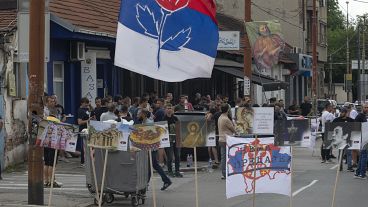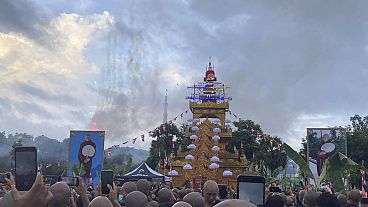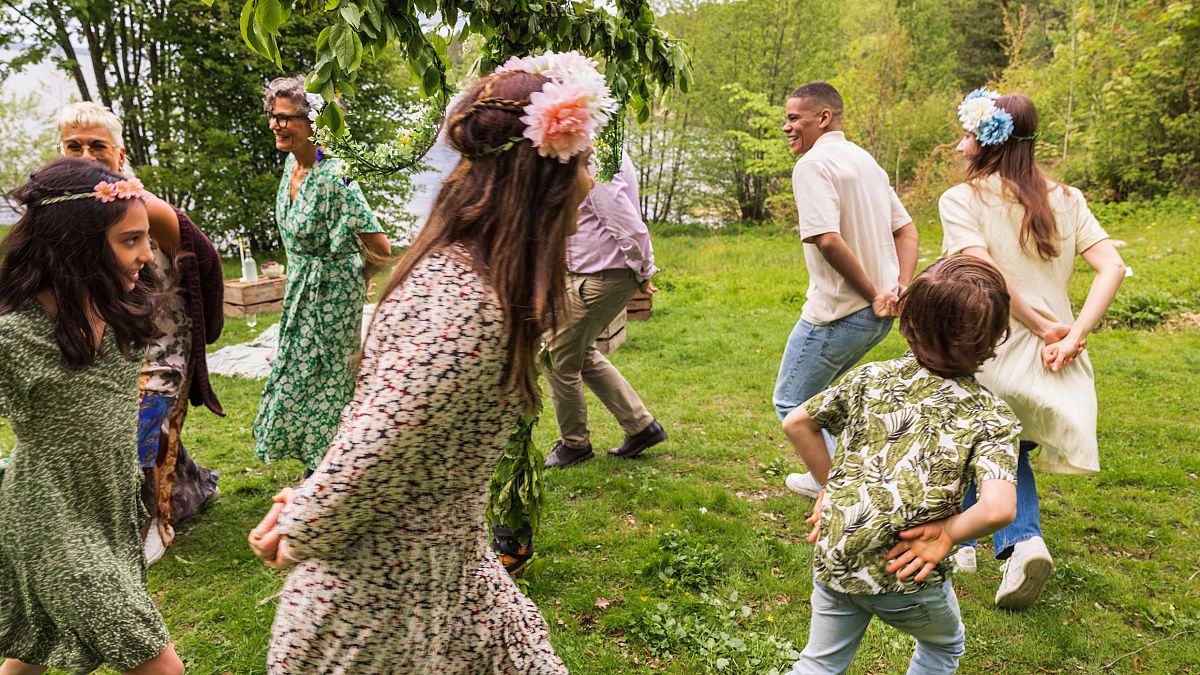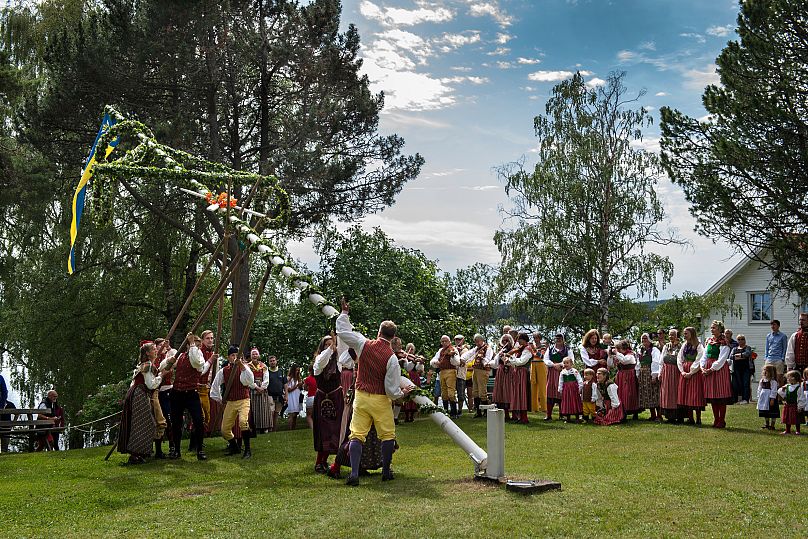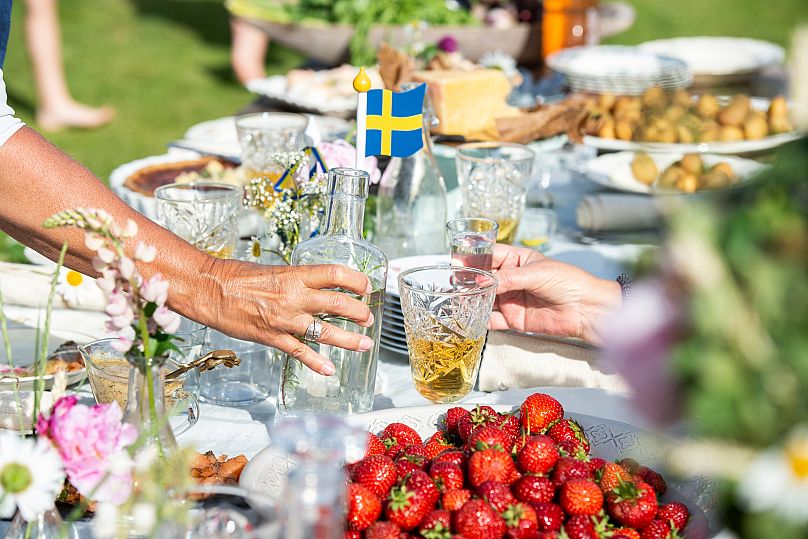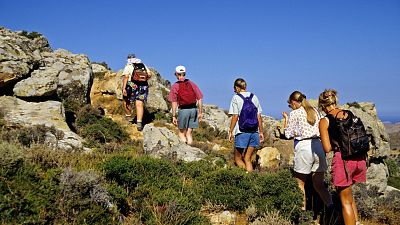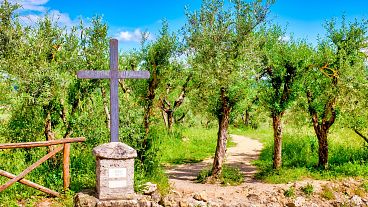In 2024, Midsummer Eve falls on 21 June and there are celebrations throughout the whole weekend.
On the longest day of the year, countries around the world hold joyous, ritualistic and mystic celebrations.
But there’s one nation that seems to feel the greatest affinity with the summer solstice.
Sweden explodes with midsummer festivities in June, many of which derive from centuries-old traditions.
In 2024, Midsummer Eve falls on 21 June and in many places, there are celebrations throughout the whole weekend.
Here’s why Swedes consider it the biggest celebration of the year.
Why does Sweden celebrate midsummer?
Sweden’s midsummer festivities began in the late Middle Ages when people celebrated by dancing around a flower and greenery-decorated pole known as a maypole.
For agrarian communities, the summer solstice was thought to be a moment of magic and mystery.
Plants were imbued with healing powers and could be used to tell the future. Walking barefoot through the morning dew after the shortest night was said to bring good health while wearing a wreath of flowers on your head was a symbol of rebirth and fertility.
“It's a festivity that is shrouded in superstitious and old-timey magic,” says Gabriella, a Swede living in Malmo.
Many of these traditions still take place. One previous midsummer, Gabriella and her friends reenacted an ancient practice where young women would tuck seven different flower varieties under their pillows, which was said to make them dream of their future husbands.
“It was so much fun to go around the countryside together picking flowers and making flower crowns,” she says. “And one of us did have a dream!”
Today, Swedes use these traditions to celebrate the arrival of the best time of the year.
“Midsummer has really deep historical roots but now it is a celebration of summer’s arrival,” says Gabriella.
“As a country that lives in darkness for a lot of the year, we have every reason to celebrate. It marks the start of summer vacation for me and the beautiful season.”
What happens during Sweden’s midsummer celebrations?
Families and friends tend to gather together in the countryside for midsummer parties but there are also towns with community events such as Dalarna, Skansen or the Stockholm Archipelago (Skärgård).
“If you want to party, there’s always one to go to,” Gabriella says.
“Most small villages will have a public celebration, that’s a great bit of culture and very welcoming,” one Reddit user writes on a thread about midsummer.
“Our three local villages gather with themed costumes and parades, it’s a big deal and a lot of fun.”
One of the key parts of the festivities is the dancing around a maypole, including the iconic Little Frogs’ Dance, which - of course - involves hopping.
Midsummer celebrations are not complete without some silly games. Referred to as ‘femkamp’, these differ between families but include classic games like croquet, tug of war and sack races as well as quirky inventions.
One popular outdoor game in Sweden is ‘kubb’, where the aim is to knock down 10 small wooden blocks and one large wooden block by throwing wooden sticks.
Sweden’s special midsummer feasts
Eating and drinking are a key part of Sweden’s midsummer festivities. The essentials are fresh new potatoes cooked with dill, pickled herring, strawberries and Aquavit - a Swedish grain or potato-based spirit flavoured with spices.
You can also expect to feast from a Swedish smorgasbord. This culinary tradition developed during the 1800s and derives from the ‘brännvinsbord’, a starter of bread, butter, cheese, salmon, anchovy or pickled herring, sausages, dried meat and three kinds of ‘brännvin’ (Aquavit).
Swedes celebrate midsummer with drinking songs
Drinking Aquavit is a ritual that involves copious toasting and singing. For each toast, a new drinking song known as a ‘snapsvisa’ is sung.
The most popular drinking song is ‘Helan går’ meaning ‘the whole goes (down)’ - which roughly translates as ‘bottoms’ up’ - and is sung before the first drink of many.
New drinking songs are still being composed and the Museum of Spirits in Stockholm has a collection of more than 12,000 of them.
“Midsummer is like American BBQ, we hang out outdoors, eat dinner and get drunk outdoors (if the weather is good, that is),” writes one Reddit user.
Another adds that spending time outside is obligatory, whatever the weather, and it's customary to stay up and watch the sunrise.


